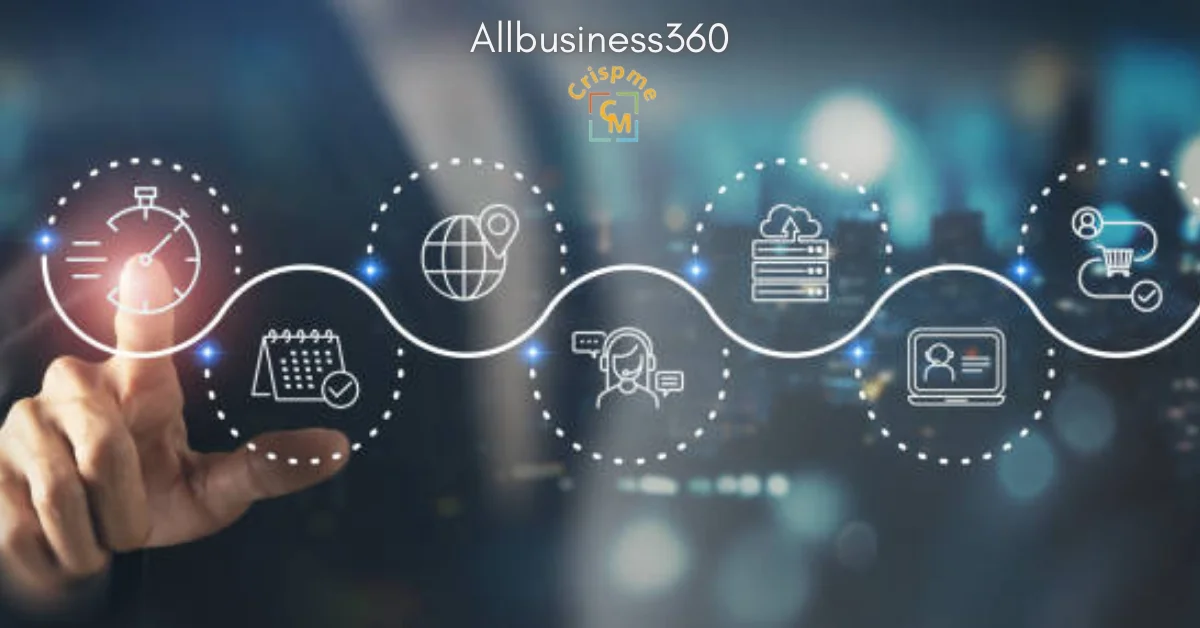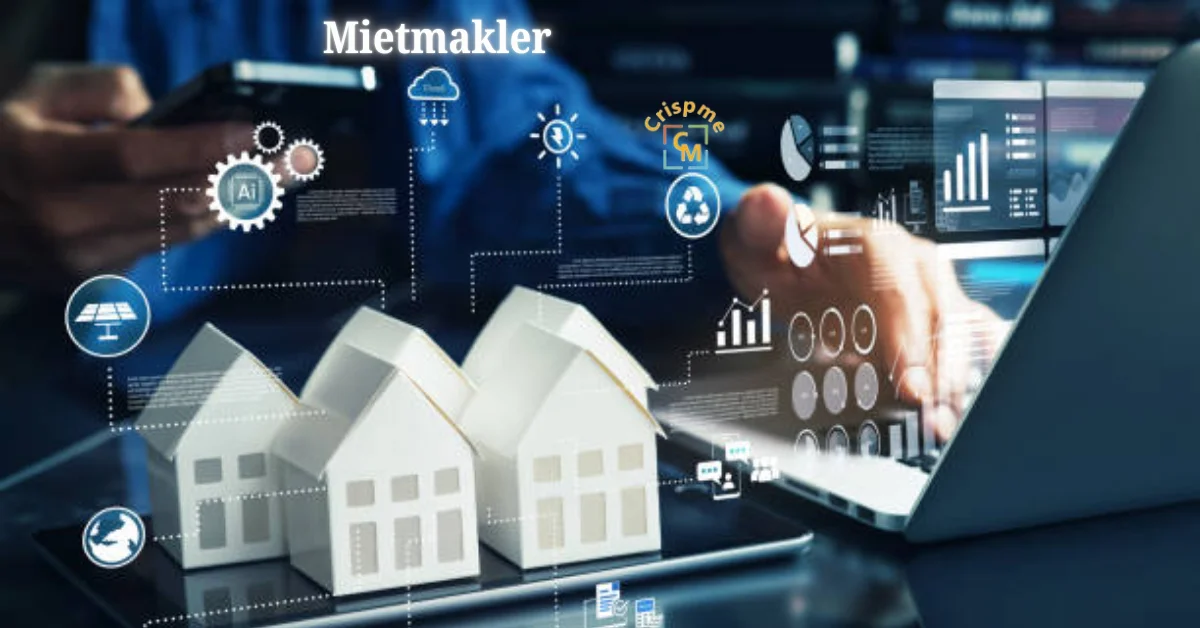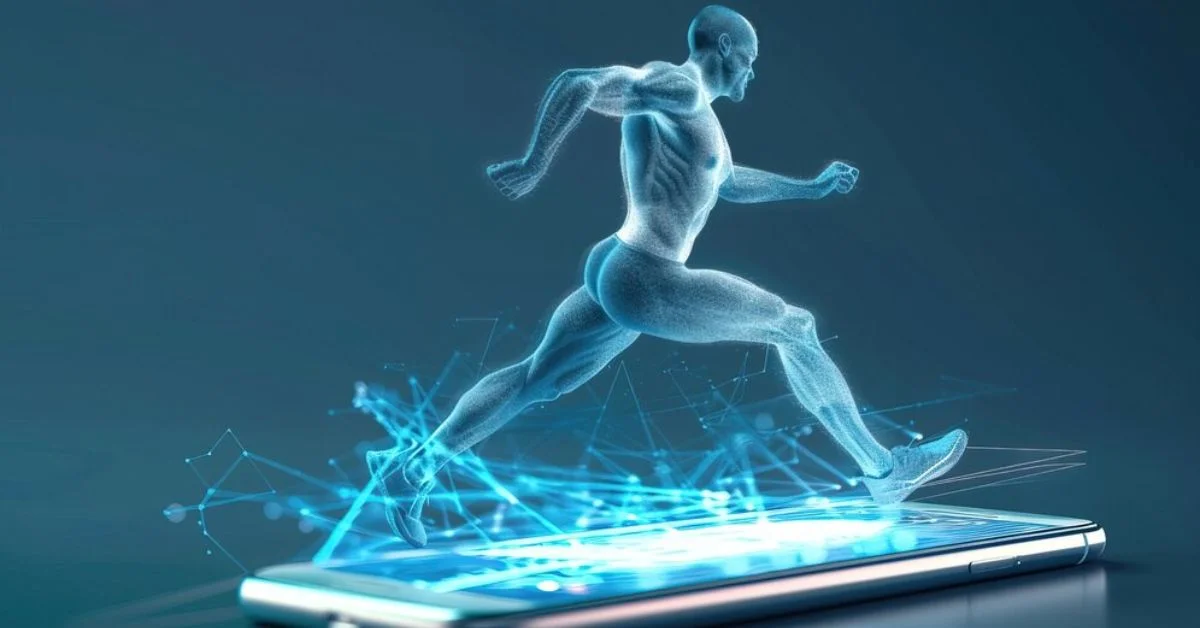BUSINESS
Mastering Event Access Control and Session Tracking: A Complete Guide to Optimizing Security and Attendee Management

Running a successful event takes more than good content and logistics. Whether you’re organizing a large trade show, a corporate conference, or a training seminar, the way people move through your space matters. Entry points, session rooms, and VIP areas all require a level of organization that ensures everything runs smoothly—and securely.
That’s where access control and session tracking come in. These tools help event planners manage who goes where, track session attendance, and gather data that’s incredibly useful for post-event analysis. In this guide, we’ll walk through what these systems do, how they work, and how they can transform the way you run events—from check-in to closing remarks.
What Is Event Access Control?
Defining Access Control in Events
At its core, access control is about making sure the right people are in the right places at the right times. It’s a system that checks credentials—whether that’s a badge, wristband, or mobile pass—at various checkpoints throughout an event.
Where Access Control Is Used
Common areas where access control is used include main entrances, breakout sessions, backstage or staff areas, and VIP lounges. Depending on the event size, you might even use it to control flow between multiple floors or venues.
Why Paper Passes Don’t Cut It Anymore
Manual methods like printed guest lists or basic wristbands often fall short. They’re time-consuming to verify, easy to forge, and don’t offer any insight into who actually showed up or where they went during the event.
Why Access Control Matters
Security That Scales
With a smart access system, it’s easier to prevent people from wandering into places they shouldn’t be—like a closed session or staff-only zone. That’s peace of mind for both organizers and attendees.
Faster Check-Ins, Less Frustration
Nobody likes standing in long lines. A well-designed access system lets attendees get scanned in quickly and move through the space without unnecessary holdups.
Smoother Experience for Everyone
Beyond the tech, it’s about reducing friction. When access points work seamlessly, attendees can focus on the event—not the logistics of navigating it.
Session Tracking: A Game-Changer for Event Data
What It Does
Session tracking logs who attends which sessions, when they arrived, and how long they stayed. It’s usually done by scanning badges at the door, either manually or with fixed scanners.
The Metrics That Matter
You’re not just tracking attendance. You’re seeing which sessions were packed, how traffic flowed across the venue, and which topics drew the most attention.
For Events Offering CE Credits
If your event offers professional development credits, tracking attendance is essential. These systems make certification easy and accurate, reducing headaches after the event.
The Tech Behind the Systems
RFID vs Barcodes
RFID allows for contactless, near-instant scanning—even from a short distance. Barcodes, while more affordable, need to be aligned and scanned directly. Both have their place depending on the scale and budget of your event.
Scanning Tools
You’ll find both handheld scanners and fixed portals being used. Portable devices are flexible and great for smaller spaces, while fixed readers work well at busy entry points.
Cloud-Based Dashboards
Most modern systems sync data in real time to a dashboard, giving you live updates on who’s checked in, how full a room is, or where attendees are spending their time.
Building a Secure and Flexible System
Customizing Access by Role
Not all passes are created equal. Speakers, vendors, attendees, and staff may all need different permissions. A good system can handle those layers easily.
Managing Restricted Areas
Whether it’s a VIP lounge or a press-only briefing, access control lets you set digital boundaries without posting security guards at every door.
Dealing With Lost Badges
If someone loses their badge or shares it with someone else, it can be deactivated and reissued quickly. That’s one less vulnerability to worry about.
Keeping Tabs in Real Time
Live Attendance Views
Knowing how many people are in a room—right now—helps you make better decisions on the fly, whether that’s opening another door or redirecting traffic.
Managing Capacity
With real-time alerts, you’ll know before a session hits its limit. That can help avoid overcrowding and ensure safety standards are met.
Emergency Support
If something goes wrong, access logs help you see who’s still in the building and where they were last scanned. That’s critical info in a crisis.
Making Life Easier for Attendees
Speed at the Gate
A simple scan at the door beats fumbling with paperwork or explaining your name three times to someone with a clipboard.
Personalized Access
Attendees can be guided to the sessions that matter to them. With integrated apps, they even get a reminder when it’s time to move.
Post-COVID Preferences
Contactless is more than a convenience—it’s often a health and safety expectation. Access systems help you meet that standard without extra hassle.
Making the Most of Session Data
See What’s Working
With tracking, you’re not guessing which sessions went well. You can see attendance spikes, drop-off rates, and repeat visits.
Map the Flow of Your Event
Heatmaps of attendee movement help you spot bottlenecks or underused areas. That insight is gold when planning your next event.
Plan Smarter for Next Time
Was that 200-seat room enough? Should you move that keynote to a bigger hall? Session data helps you make those calls with confidence.
Turning Data into Action
Post-Event Reports
Instead of guessing how many people came or who attended what, you’ll have a full report showing attendance per session, by time and date.
Auto-Verify for Certifications
If your event includes training or CEU tracking, automated attendance logs make it easy to issue certifications without chasing paperwork.
Identify Patterns and Trends
See which sessions were hits, when traffic peaked, or how long people stayed on average. Use that insight to tailor content for future events.
Syncing with the Tools You Already Use
Registration and Badge Systems
A good access control setup works hand-in-hand with registration tools. That means no manual data entry or mismatched records.
APIs and Integrations
Many platforms offer APIs to help you plug data into apps, CRM systems, or custom event platforms you already use.
Mobile App Compatibility
Attendees using a mobile app can access sessions, schedules, and notifications—all synced with your access control system.
Privacy and Compliance
Keeping Data Secure
Encrypted systems protect attendee data both in transit and at rest. Make sure any vendor you work with meets current standards.
Meeting Legal Requirements
Privacy laws like GDPR require clear communication and consent. Transparent data use builds trust and keeps you compliant.
Communicating with Attendees
Letting people know what you’re tracking—and why—goes a long way. It’s about keeping things clear and respectful.
Getting Ready for the Unexpected
Test Everything Before the Doors Open
Scanning devices, Wi-Fi connections, and dashboards should all be checked and tested in advance. It’s the best way to prevent surprises.
Train Your Staff
Even the best systems need human support. Make sure your team knows how to use the tools, help attendees, and troubleshoot on the fly.
Have a Backup Plan
Whether it’s a power outage or a device failure, having a simple fallback method—like offline scanning—can save the day.
Common Hurdles and How to Handle Them
Tech Glitches in Big Venues
If your event spans multiple floors or halls, ensure you’ve got reliable connectivity and backup power for all critical devices.
Preventing Credential Abuse
Dynamic QR codes, encrypted badges, and photo IDs are just a few ways to reduce fraud risk.
Balancing Access and Ease
Security doesn’t have to feel heavy-handed. When done right, access control blends into the event experience without slowing anyone down.
What’s Coming Next
Smarter Access with AI
Some systems are starting to use AI to predict traffic patterns, suggest staffing levels, and even personalize the attendee experience in real time.
Biometrics and Facial Recognition
These tools offer ultra-fast check-ins, though they come with higher privacy standards. Their adoption is growing—especially for high-security events.
Blockchain Credentials
Blockchain can offer secure, tamper-proof credentials that are easy to verify and impossible to fake. It’s still early, but worth watching.
Key Takeaways
Access control and session tracking aren’t just nice-to-have—they’re essential for large or complex events.
They improve security, streamline operations, and enhance the experience for both attendees and staff.
With the right setup, you can collect data that helps make every event better than the last.
FAQs
1. What kinds of events benefit most from access control?
Large conferences, educational seminars, expos, and corporate training events all see major benefits—especially those with multiple sessions or access tiers.
2. Is RFID really better than barcodes?
RFID is faster and more hands-free, but barcodes are cost-effective and get the job done for smaller events. It depends on your needs.
3. Can access tracking help manage large crowds?
Absolutely. You’ll get real-time data on room capacities, flow patterns, and attendee distribution, which helps keep everything under control.
4. What should I do with the session data after the event?
Use it to evaluate speaker performance, optimize your schedule for future events, or send personalized follow-ups based on attendee interests.
5. Can these systems work with hybrid or remote events?
Many do. Session tracking tools can log virtual attendance and integrate with online platforms for a cohesive experience across formats.
BUSINESS
AllBusiness360: Adaptive Strategy for Fast-Moving Businesses

Introduction to AllBusiness360
In today’s fast-paced business landscape, adaptability isn’t just a trait; it’s a necessity. Companies that cling to outdated strategies risk being left behind. Enter AllBusiness360 your partner in navigating the complexities of an ever-evolving market. This innovative platform empowers businesses to rethink their approach and embrace change with confidence.
With the right tools and insights, organizations can pivot quickly, seize new opportunities, and stay ahead of competitors. But what does it mean to adopt an adaptive strategy? How can your enterprise thrive amidst constant shifts? Let’s dive into the world of AllBusiness360 and explore how adaptive strategies pave the way for growth and success in modern business.
Understanding Adaptive Strategy
Adaptive strategy is all about flexibility. In a world where market dynamics shift rapidly, businesses must respond swiftly to stay relevant. This approach allows companies to pivot based on real-time data and changing consumer preferences.
At its core, adaptive strategy involves continuous learning and adjustment. Organizations monitor trends and competitor movements closely, adjusting their tactics accordingly. This responsiveness fosters resilience in the business model.
Innovative thinking plays a crucial role here. Teams are encouraged to brainstorm new ideas regularly, testing what works best for their audience. By embracing trial and error, businesses can refine their strategies over time.
An adaptive strategy not only safeguards against unforeseen challenges but also positions companies for seizing unexpected opportunities. It’s about being proactive rather than reactive transforming potential obstacles into avenues for growth.
The Benefits of Implementing an Adaptive Strategy
Implementing an adaptive strategy brings a wave of advantages for businesses navigating today’s dynamic landscape. One significant benefit is enhanced agility. Companies can pivot quickly in response to market changes, ensuring they remain relevant and competitive.
Another advantage lies in improved decision-making. With real-time data and insights, teams can make informed choices rather than relying on outdated information or gut feelings.
Additionally, fostering a culture of adaptability encourages innovation. Employees feel empowered to experiment and propose new ideas without the fear of failure holding them back.
Customer satisfaction also sees a boost when businesses adapt effectively. By responding promptly to customer needs and feedback, companies create stronger relationships with their clientele.
Financial resilience improves as organizations that embrace change are more capable of weathering economic fluctuations. This forward-thinking approach positions businesses for long-term viability in an ever-evolving marketplace.
Key Elements of an Effective Adaptive Strategy
An effective adaptive strategy hinges on several key elements that enable businesses to thrive in dynamic environments.
Flexibility is essential. Companies must be willing to pivot quickly as market conditions evolve. This agility allows for rapid responses to unexpected challenges.
Data-driven decision-making plays a crucial role too. Leveraging analytics helps organizations understand trends, customer preferences, and operational efficiencies, ensuring informed choices.
Collaboration fosters innovation. Encouraging cross-departmental teamwork can spark creative solutions that might not surface in silos.
Continuous learning should be ingrained in the company culture. Embracing feedback and adjusting strategies based on real-time insights keeps organizations ahead of the curve.
These elements work together harmoniously, empowering companies to navigate uncertainty confidently and seize new opportunities effectively.
Case Studies: Successful Companies that Utilized Adaptive Strategies
Many companies have embraced adaptive strategies to thrive in a fast-paced environment. One standout example is Netflix. Initially, it focused solely on DVD rentals but quickly pivoted to streaming as internet speeds improved and consumer preferences shifted. This adaptability helped it dominate the entertainment industry.
Another case is Blockbuster’s decline when they failed to adjust their business model in response to changing technology and customer habits. Their reluctance led them to miss opportunities that competitors seized.
Conversely, Amazon has continuously evolved its offerings beyond just books. By diversifying into cloud computing and groceries, they’ve managed to stay ahead of market trends.
These cases highlight how an agile approach can be crucial for survival and growth in today’s competitive landscape. Companies that adapt not only respond better but often lead their industries by anticipating change before it happens.
How to Develop and Implement an Adaptive Strategy with AllBusiness360
Developing an adaptive strategy with AllBusiness360 begins with a deep understanding of your business environment. Monitoring market trends alongside customer behavior is fundamental. Utilize the tools provided by AllBusiness360 to gather insights that inform your decisions.
Next, set clear objectives. Define what success looks like for your organization in both the short term and long term. This gives you a direction while remaining flexible to change.
Engage your team throughout the process. Collaboration fosters innovation and ensures everyone is aligned with the strategy’s goals.
Implement feedback loops within your operations. Constantly monitor performance metrics using AllBusiness360’s analytics features to make adjustments as needed.
Nurture a culture of adaptability within your organization. Encourage experimentation and learning from failures; this mindset will empower teams to pivot when necessary without fear or hesitation.
Conclusion: Why AllBusiness360 is the Future of Business Growth and Success
AllBusiness360 stands out as a vital resource for businesses looking to thrive in today’s dynamic environment. Its focus on adaptive strategies allows organizations to remain agile, responding effectively to market changes and customer demands.
With the rapid pace of technological advancement and shifting consumer preferences, companies that embrace this approach are more likely to succeed. AllBusiness360 equips businesses with the tools necessary to assess their current strategies, identify areas for improvement, and implement effective solutions tailored to their unique needs.
As we look ahead, it’s clear that an adaptive mindset is essential for sustainable growth. Businesses that leverage AllBusiness360 will not only navigate challenges but also seize opportunities others might overlook. By prioritizing adaptability, these companies position themselves for long-term success in an ever-evolving landscape.
Investing in an adaptive strategy through AllBusiness360 isn’t just about keeping up; it’s about leading the way into a prosperous future where innovation meets resilience. The journey toward business excellence starts here.
BUSINESS
Mietmakler: Expert Help for Landlords and Tenants in Rentals

Introduction to Mietmakler
Navigating the world of rentals can feel like wandering through a maze. Whether you are a landlord seeking to lease your property or a tenant searching for the perfect place to call home, the process can be overwhelming. This is where a Mietmakler steps in as your guiding light. As experts in rental agreements and negotiations, Mietmakler bridge the gap between landlords and tenants, ensuring smooth transactions and clear communication. Discover how these professionals make renting hassle-free and why they might just become your new best friend in real estate!
Services Offered by Mietmakler
Mietmakler offer a range of services designed to simplify the rental process for both landlords and tenants. They assist in property listings, ensuring that each listing is detailed and appealing to potential renters.
For landlords, Mietmakler conduct thorough tenant screenings. This includes background checks, credit assessments, and verification of references. The aim is to match landlords with reliable tenants who respect their properties.
Tenants also benefit from personalized assistance. Mietmakler help them find suitable rentals based on their preferences and budget. They provide valuable insights into neighborhoods and market trends.
Additionally, Mietmakler handle lease agreements and negotiations, making sure all parties understand the terms clearly. Their expertise minimizes misunderstandings or conflicts down the line.
With local market knowledge at their disposal, these professionals can advise on fair pricing strategies for properties as well. Each service aims to make renting easier for everyone involved.
Benefits of Using Mietmakler for Landlords and Tenants
Using a mietmakler can significantly ease the burdens of both landlords and tenants. For landlords, these professionals offer expertise in setting competitive rental prices. They conduct market research to ensure properties attract suitable tenants quickly.
Tenants also reap the rewards. Mietmakler help them navigate listings, ensuring they find homes that meet their needs without wasting time on unsuitable options.
Another major benefit is mediation during negotiations. A skilled mietmakler acts as an intermediary, facilitating communication between parties for smoother transactions.
Additionally, hiring a mietmakler means access to legal guidance throughout the rental process. This support helps both sides understand their rights and responsibilities clearly.
Utilizing a mietmakler creates a more efficient experience for all involved in rentals while minimizing potential headaches associated with finding or managing properties.
How Mietmakler Streamlines the Rental Process?
Mietmakler play a crucial role in simplifying the rental process for both landlords and tenants. They act as intermediaries, bridging the gap between property owners and prospective renters.
With their expertise, Mietmakler handle essential tasks such as property listings, viewings, and negotiations. This saves time for everyone involved. Instead of juggling numerous inquiries or scheduling conflicts, clients can rely on professionals to manage these details efficiently.
Moreover, they provide valuable market insights. Their knowledge helps set competitive rental prices that attract potential tenants while ensuring landlords receive fair value.
Mietmakler also assist in navigating legal complexities associated with rentals. From drafting contracts to understanding tenant rights, they ensure compliance with local regulations.
This streamlining not only enhances efficiency but also fosters better communication between parties. With Mietmakler on board, the entire rental experience becomes smoother and more organized.
Success Stories and Testimonials from Clients
Clients often share their positive experiences with Mietmakler, highlighting how the service transformed their rental journey. One landlord recounted how a Mietmakler quickly found reliable tenants for his property. The entire process was seamless and stress-free.
Tenants also express gratitude, noting that Mietmaklers helped them navigate complex paperwork. A young couple shared their relief at finding an apartment that met all their needs within weeks.
Another success story features a seasoned investor who praised the expert advice received on market trends. This insight led to profitable decisions.
These testimonials showcase not just satisfaction but genuine appreciation for the personalized support provided by Mietmaklers professionals. Each story reflects a commitment to making rentals easier for everyone involved in the process.
Tips for Choosing the Right Mietmakler
The right Mietmakler can make a big difference; start with research on local firms and insights from former clients. This gives you insight into their reputation and service quality.
Next, consider their expertise in the specific type of rental you’re interested in. Some Mietmakler specialize in residential properties, while others focus on commercial spaces. Choose one that aligns with your needs.
Don’t hesitate to interview potential candidates. Request information on procedures, fees, and outcomes—reliable Mietmakler are upfront about it.
Additionally, assess how responsive they are during initial communications. Maintaining open dialogue is essential for a seamless rental journey.
Trust your instincts when making a decision. You want someone who understands your goals and makes you feel comfortable throughout the journey.
Conclusion: Simplify Your Rental Experience with Mietmakler
For landlords and renters alike, managing rentals can seem complex and stressful. With various complexities involved, having an expert by your side can make all the difference. Mietmakler delivers services shaped to suit the varied demands of landlords and tenants.
Whether you’re looking to find a suitable tenant or searching for your dream apartment, relying on a professional ensures you have access to valuable resources and insights. The benefits of using Mietmaklers are evident in their ability to streamline processes, saving time and reducing stress.
Success stories from satisfied clients underscore how effective these experts are in transforming challenging situations into successful outcomes. Their insights can help you avoid common pitfalls often encountered during rentals.
When choosing the right Mietmaklers, consider their experience, reputation, and client reviews. This will ensure that you partner with someone who understands your specific needs.
Embracing the assistance of a Mietmaklers not only simplifies your rental process but also enhances your overall experience in finding or leasing properties efficiently. It’s an investment worth considering for anyone entering this dynamic market.
REAL ESTATE
Tokenizer.Estate Partners With Hacken After Security Audit, Boosting Institutional Confidence in Real Estate Tokenization

Tokenizer.Estate has announced that it completed a security audit with blockchain security firm Hacken and signed a long-term collaboration to strengthen security and compliance support across its real estate tokenization platform. The update matters because real-world asset (RWA) tokenization connects on-chain code to high-value, regulated assets, where security gaps can turn into real financial and legal problems.
What was announced and why it matters
In the announcement, Tokenizer.Estate said its core smart contracts and key components went through Hacken’s security review, and that both firms will work together beyond a one-time audit. The goal is clear: add independent, institutional-grade security review into the platform’s ongoing roadmap so issuers and investors can rely on external checks, not just internal claims.
For institutional participants, “trust” is not a marketing word. It is a requirement. Investment committees, compliance teams, and regulators often need proof that smart contracts and related systems were reviewed and tested using recognized methods. In this case, Tokenizer.Estate positions the Hacken work as a way to raise confidence in on-chain real estate structures by adding third-party validation and continuous review.
What the partnership includes
Tokenizer.Estate describes the Tokenizer.Estate and Hacken partnership as having two main pillars: a completed audit and a long-term security and compliance partnership.
Here is what the cooperation covers in practical terms:
- Independent smart contract audits for core contracts and future releases, with a remediation cycle where issues are fixed and re-checked.
- Ongoing penetration testing for critical off-chain components (the parts that sit outside the blockchain but still affect the platform’s security).
- Security best-practice guidance tailored to RWA and tokenization projects, so teams follow safer design patterns over time.
- Support to communicate the platform’s security posture to institutional clients, which can help during due diligence and procurement reviews.
- Legal and regulatory advisory access for Tokenizer.Estate clients through Hacken Advisory and partners, including guidance on licensing, structuring, and tax for tokenization projects.
This package matters because it treats security as continuous work, not a one-time checkbox. Tokenizer.Estate frames the partnership as an ongoing process connected to future upgrades and new product launches.
Why security is central to RWA tokenization
Real estate tokenization is often described as a way to fractionalize assets, improve access, and make ownership transfers more efficient. But behind those benefits is software that must be correct and resilient. If smart contracts have bugs or weak logic, outcomes can be severe. The announcement points to risks such as misallocated ownership, blocked redemptions, and regulatory or reputational damage when flaws exist in the stack connecting smart contracts to real-world property.
From an institutional security perspective, independent testing can reduce several key concerns:
- Smart contract review helps identify attack paths and logic flaws before they are exploited.
- Penetration testing looks at systems around the contracts (apps, APIs, and infrastructure), which is important because attackers do not only target the chain layer.
- Compliance advisory supports teams that operate in multiple jurisdictions, where tokenized real estate projects must fit local rules and reporting expectations.
This is also important for investor protection. In tokenized real estate, investors are not just buying a “token.” They are buying a digital representation of rights tied to a real property structure. Strong security and clearer compliance practices can help protect the integrity of those rights, especially as platforms evolve and add features.
A closer look at the two companies involved
Tokenizer.Estate describes itself as a white-label platform for real estate tokenization and analytics, designed for groups such as property developers, real estate firms, funds, high-net-worth individuals, and financial institutions. It presents the platform as covering the full lifecycle of tokenized real estate, from structuring and issuing digital ownership interests to onboarding investors, managing transfers, and reporting.
Hacken is presented as a blockchain security company that provides services such as audits, penetration testing, and vulnerability assessments, alongside compliance-oriented advisory tied to frameworks like MiCA, DORA, and VARA. This matters for RWA projects because teams often need both technical testing and governance support to satisfy risk and compliance expectations.
Broader industry context: security oversight is becoming a baseline
RWA tokenization is moving from early experiments toward more structured products and larger participants. As it grows, security oversight becomes more important because the value at risk rises and the user base becomes more demanding. Real estate is a strong example: it is high value, heavily regulated, and linked to real legal ownership.
That is why more platforms are investing in repeatable controls: audits, ongoing testing, safer design standards, and evidence that can be shared in due diligence. If you are following developments in this space, Tokenizer.Estate’s publication offers ongoing updates and category-based coverage through its real estate tokenization news hub.
Conclusion
The Tokenizer.Estate–Hacken collaboration is not just a single security audit announcement. It is framed as a longer-term security and compliance program that includes continued smart contract audits, penetration testing, security best-practice guidance, and regulatory advisory support for RWA clients.
As the tokenized real estate ecosystem matures, these steps can become a benchmark for how platforms build institutional confidence. By combining independent security review with ongoing oversight, Tokenizer.Estate signals that real estate tokenization needs the same discipline found in other parts of modern financial infrastructure—especially when real property rights are represented on-chain.

 BUSINESS10 months ago
BUSINESS10 months agoBrand Visibility with Imprint Now and Custom Poly Mailers

 TECHNOLOGY8 months ago
TECHNOLOGY8 months agoDizipal 608: The Tech Revolution Redefined

 HEALTH9 months ago
HEALTH9 months agoHappy Hippo Kratom Reviews: Read Before You Buy!

 HEALTH6 months ago
HEALTH6 months agoYour Guide to Shedding Pounds in the Digital Age

 BUSINESS11 months ago
BUSINESS11 months agoExploring the Benefits of Commercial Printing

 HOME IMPROVEMENT10 months ago
HOME IMPROVEMENT10 months agoThe Do’s and Don’ts of Renting Rubbish Bins for Your Next Renovation

 HEALTH6 months ago
HEALTH6 months agoThe Surprising Benefits of Weight Loss Peptides You Need to Know

 LIFESTYLE10 months ago
LIFESTYLE10 months agoThe Disciplinary Wives Club: Spanking for Love, Not Punishment












